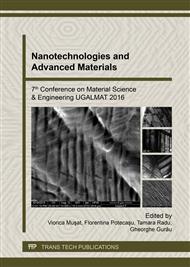p.174
p.180
p.188
p.194
p.200
p.207
p.214
p.221
p.227
Computer Vision Algorithm for Collision Detection in Case of Industrial Environment
Abstract:
This paper presents a computer vision algorithm for achieving fast collision detection. This paper presents a solution for a highly adaptable solution. The acquired depth images are used to calculate a possible collision with industrial machines. Using a robot model and marked cells on the floor any robot cinematic configurations can be checked for collisions with human detected in the workspace. The proposed approach is applicable to a variety of industrial applications where operators are under threat of accidents.
Info:
Periodical:
Pages:
200-203
Citation:
Online since:
February 2017
Authors:
Keywords:
Price:
Сopyright:
© 2017 Trans Tech Publications Ltd. All Rights Reserved
Share:
Citation:


